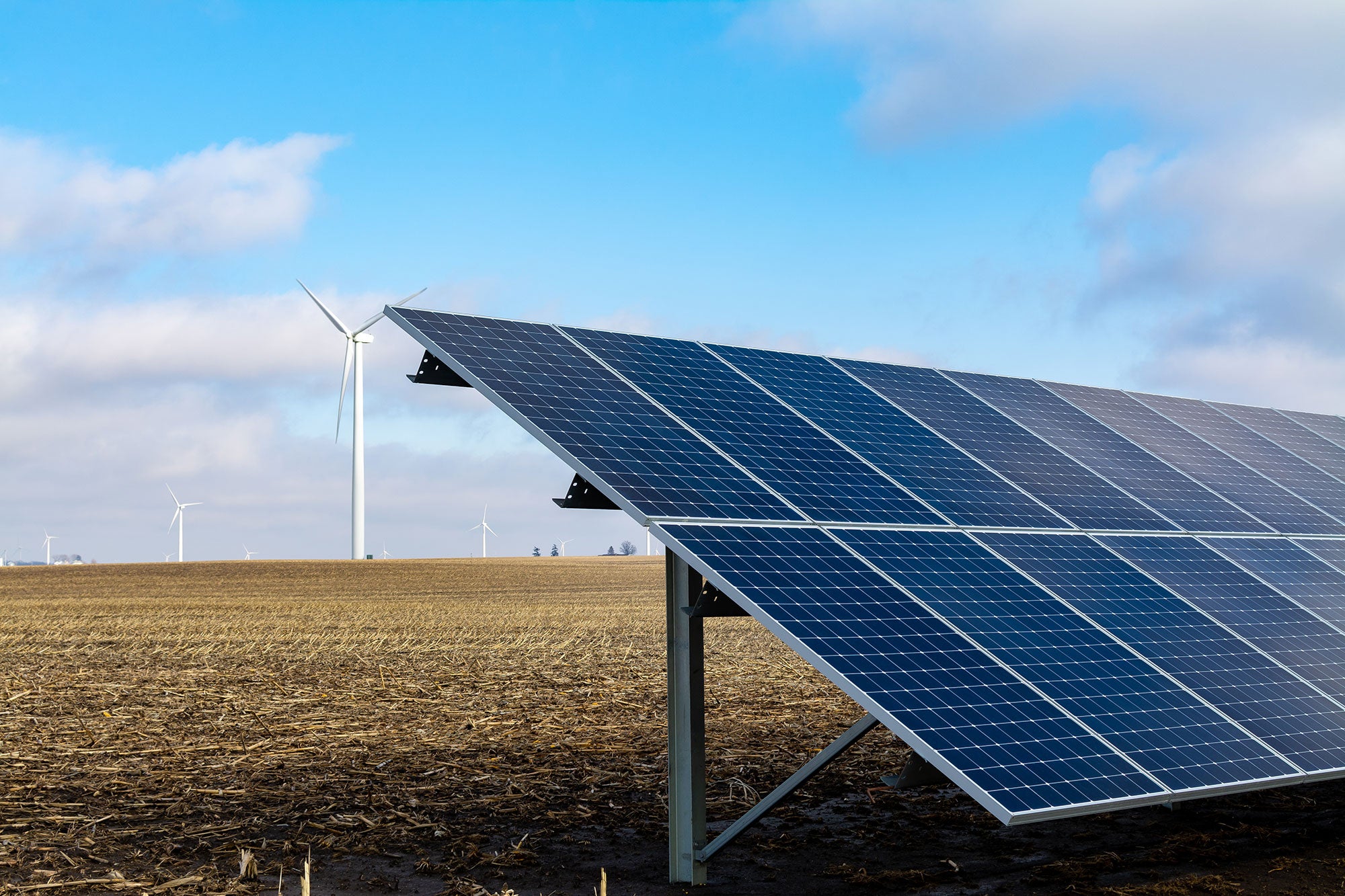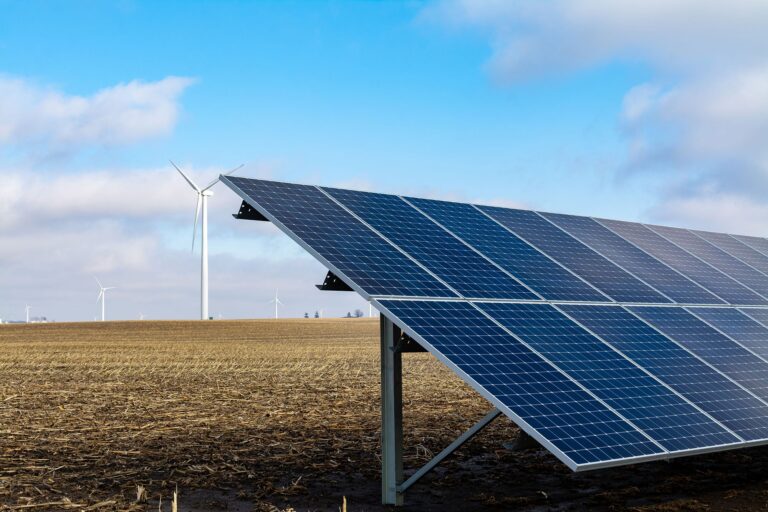DAILY Bites
-
Secretary Brooke Rollins announced that the USDA will no longer support large-scale renewable energy projects on productive farmland.
-
Rollins said subsidized solar farms drive up land costs and threaten agricultural heritage; supporters praised the decision as safeguarding farmland for future generations.
-
Environmental advocates argue solar and wind can coexist with farming and provide revenue for landowners.
DAILY Discussion
Farmers are not inherently against renewable energy sources, such as solar. What they do tend to be against is the creation of solar facilities on prime farmland, especially as the United States is already seeing a rapid depletion of arable land due to urban and suburban sprawl.
The question has long been asked (but never sufficiently answered) about why more solar initiatives can’t be focused on big-box store parking lots or the rooftops of tall downtown buildings.
So it will come as welcome news to many in agriculture that USDA Secretary Brooke Rollins said this week that her agency will no longer put taxpayer dollars toward solar panels on productive farmland or allow solar panels manufactured by foreign adversaries to be used in USDA projects. In recent years, subsidized solar farms have made it more difficult for growers to access farmland by making it more expensive and less available.
Rollins’ announcement took place in Lebanon, Tennessee, where she was joined by Tennessee Gov. Bill Lee, state Sen. Marsha Blackburn, U.S. Sen. Bill Hagerty, U.S. Rep. John Rose, and USDA Deputy Secretary Stephen Vaden.
“Our prime farmland should not be wasted and replaced with Green New Deal subsidized solar panels. It has been disheartening to see our beautiful farmland displaced by solar projects, especially in rural areas that have strong agricultural heritage,” Rollins said. “One of the largest barriers of entry for new and young farmers is access to land. Subsidized solar farms have made it more difficult for farmers to access farmland by making it more expensive and less available.
“We are no longer allowing businesses to use your taxpayer dollars to fund solar projects on prime American farmland, and we will no longer allow solar panels manufactured by foreign adversaries to be used in our USDA-funded projects,” she added emphatically.
🚨BIG NEWS for American Farmers!
I just announced in Lebanon, TN – effective immediately – American farmland will NO LONGER use taxpayer dollars to build solar farms.
Millions of acres of prime farmland is left unusable so Green New Deal subsidized solar panels can be built.… pic.twitter.com/YWMmVCHZ1t
— Secretary Brooke Rollins (@SecRollins) August 18, 2025
The move is part of a sharp reversal from the Biden administration, which sought to expand clean energy projects on farmland as part of its climate agenda. The USDA has historically provided more than $2 billion in funding for renewable energy projects through programs such as the Rural Energy for America Program.
A 2024 USDA study found that wind turbines and solar farms occupied about 424,000 acres of rural land in 2020 — which is less than 0.05 percent of the nearly 900 million acres of U.S. farmland.
According to the Solar Energy Industries Association, solar has seen massive growth over the past two decades, especially as installation prices have dropped, making it more economically competitive with other sources of electricity generation. There are now 248 gigawatts (GW) of solar capacity installed nationwide, enough to power over 41 million homes. In the past decade, solar deployments have experienced an average annual growth rate of 28 percent, the industry group said.
However, that growth has come with a potential cost to food security. According to the USDA, solar panels on farmland across the country since 2012 have increased by nearly 50 percent. In Tennessee, where Rollins made her announcement, Tennessee alone has lost over 1.2 million acres of farmland in the past three decades and is expected to lose 2 million acres by 2027 — though it’s not clear how much of that was due to solar, specifically.
“Tennessee farmland should be used to grow the crops that feed our state and country, not to house solar panels made by foreign countries,” Blackburn said. “Secretary Rollins and President Trump are right to put an end to these Green New Deal subsidies that waste taxpayer dollars while threatening America’s food security.

The USDA said this week’s action “will rapidly eliminate the market distortions and costs imposed on taxpayers by reducing energy subsidies and builds upon the repeal of and modifications to wind, solar, and other ‘green’ energy tax credits in the One Big Beautiful Bill Act.” The agency added that it will further the USDA’s determination to end taxpayer support for “unaffordable and unreliable ‘green’ energy sources” and ensure the supply chain consists of American products and manufacturing.
Environmental advocates and renewable energy industry groups have long argued that solar and wind projects can coexist with farming, providing additional revenue for landowners while contributing to emissions reductions. Critics of the new policy warn it could stifle investment in rural communities and weaken U.S. efforts to transition away from fossil fuels.
The USDA did not respond to questions about how it will measure impacts on farmers who had been relying on renewable project revenue.


:max_bytes(150000):strip_icc()/BryanJorgensesn-HowtoSelectBetterSeedVarieties-R5A_7313-025_corn-0f6e1cf684454c75bd92722e97d50f5e.jpg)
:max_bytes(150000):strip_icc()/ProblemArtOCT25-a6e1fd0823ff4e1f8d8912ef07a53800.jpeg)
:max_bytes(150000):strip_icc()/ProblemArt-Aug25-355d10643dc54a2bb9e1584f01a4e575.jpeg)



:max_bytes(150000):strip_icc()/101084648_preview-de4749472f174d74b6c39986c8be28d0.jpg)
:max_bytes(150000):strip_icc()/Jon-Kinzenbaw-Jessie-Scottcopy-92cf55b729d445339f4b7189afd6874e.jpg)
:max_bytes(150000):strip_icc()/2208-05-071_farm_grain_bin_silo-453e0ef674bd4e0f97867e1e4281c5dd.jpg)